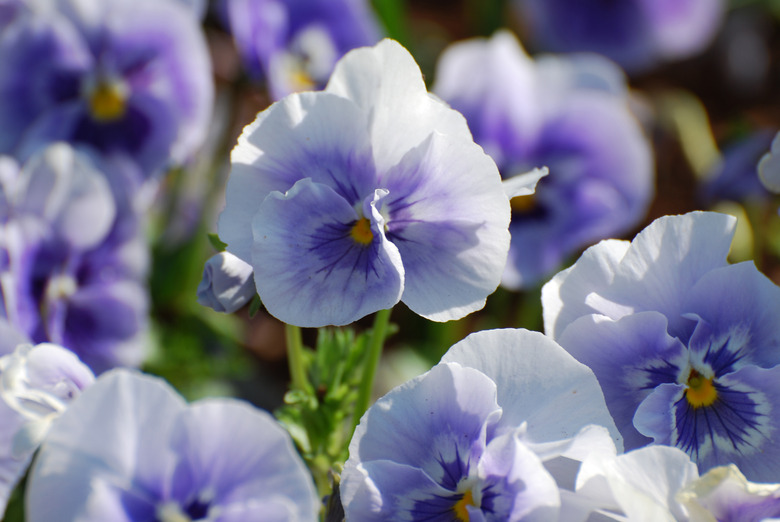How To Cut Back Pansies
We may receive a commission on purchases made from links.
A hardy, cool-weather plant with vibrant blossoms, pansies (Viola x wittrockiana) are a favorite among gardeners. Typically, they are planted in the fall or spring and can be grown as annuals, perennials, or biennials, depending on your geographical region and climate. Pansies are easy to care for, and although they are low-maintenance plants, removing dead or wilted flowers at the height of the blooming season is important for an abundance of flowers.
What Causes Leggy Pansies?
What Causes Leggy Pansies?
Pansies can become leggy for a variety of reasons. Pansies do not like intense heat, but they do need a minimum of six hours of sunlight a day. If temperatures rise suddenly, it can cause the stems to become elongated, often referred to as "leggy." The reverse situation of too much shade can also cause pansy stems to shoot up or become leggy.
Pansies are best planted in the late fall or early spring and flourish in cooler temperatures. These plants may go dormant during the summer months.
Why Cut Back Pansies?
Why Cut Back Pansies?
When pansies are in bloom, especially at the height of the season, it's important to spend time each week to deadhead them. Deadheading is eliminating dead or wilted flowers by cutting or pinching them off. The process of deadheading also ensures more blossoms because the plant will put its energy into producing new flowers. Typically, you want to check on your pansies and deadhead them every five to seven days. You can decide if you prefer to remove dead or spent blossoms with your fingers or with pruning shears.
Things Needed
-
Compost bin (optional)
-
Clean cloth or rag
-
Rubbing alcohol
How to Cut Back Pansies
1. Look for Wilted Flowers
Go to the beds where your pansies are growing and look for any dead, old, or wilted flowers.
2. Deadhead the Plant
Deadhead pansies by pinching the old flowers off with your fingers or by using a pair of clean, sharp garden shears to snip them off.
3. Find Leggy Stems
Check for leggy stems and trim them back to 3 to 5 inches tall with at least four nodes.
4. Place Plant Parts in Compost
Once you finish, clean up all the flowers and toss them in a compost bin or pile. Don't leave plant parts on the ground, as humid weather conditions could promote disease or fungal issues that could spread to different areas in the garden.
5. Clean Your Shears
Clean and sanitize your shears by wiping the blades clean of debris or dirt and then dipping them in rubbing alcohol as a good maintenance practice so they are ready to go for your next pruning activity.
